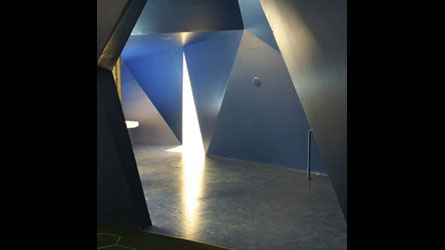|
SENSE SPACES:One of the greatest advances in nanoscience was a paradigm shift in understanding that access and control of the nanoworld is possible through tactile feeling sensors as opposed to lens based viewing microscopes. Like brail on the atomic scale, this method of reading through feeling shifts the perceptual focus of science from image saturation to the subtly of touch. Non-visual, "feeling" spaces provide transitions between the highly immersive central Cell and the other installations. Subtle changes in textile environment and pulsed soundscapes provoke the visitor to "feel" the way into and away from the Cell. SOUNDS:Within the sense spaces, keywords about nanoscience echo through the tunnel. Words such as "nanotechnology," "molecules," "genes," and "virtual" will be spoken in various languages and tones, stated and whispered by different voices. The samples will be played in random order with alternating breaks of silence and will often be synthesized and disassembled. The result is an environmental soundscape in which the distinctness of words, voices, and perception become distorted and linguistic meaning is not immediately recognizable. Each sense space will contain a wall railing that is equipped with bass shakers connected to the bass sound of the inner cell. The railings vibrate at the visitor's touch. The feeling of sound leads the visitor into the inner cell. |
|
